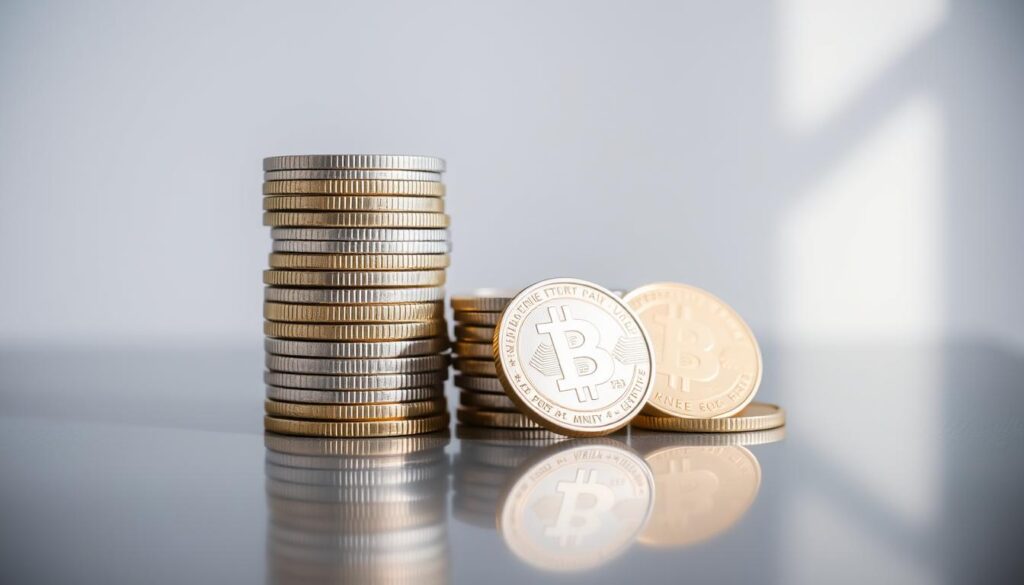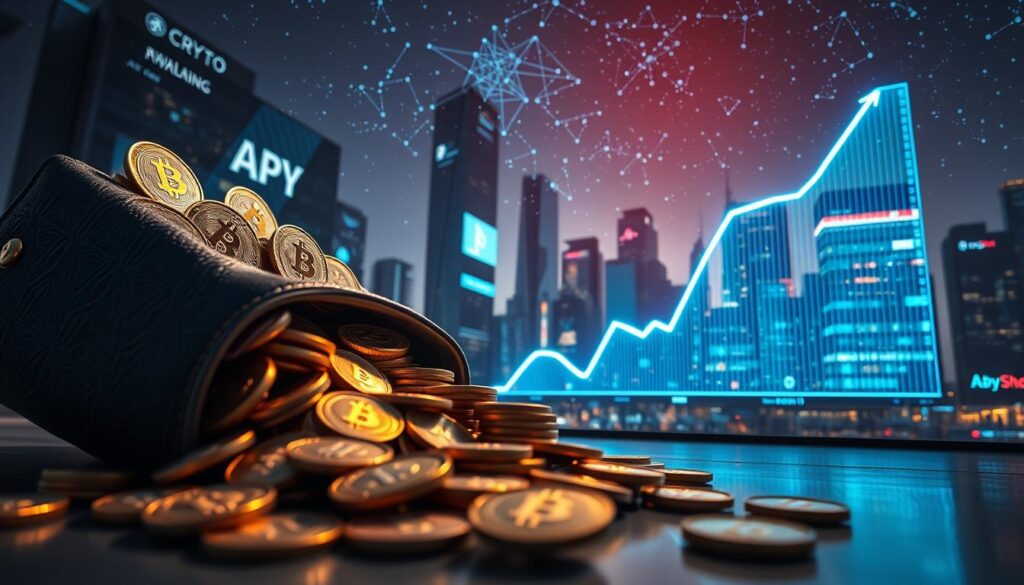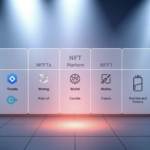Now Reading: Learn How to Buy Bitcoin with Credit Card Safely Online
- 01
Learn How to Buy Bitcoin with Credit Card Safely Online
Learn How to Buy Bitcoin with Credit Card Safely Online
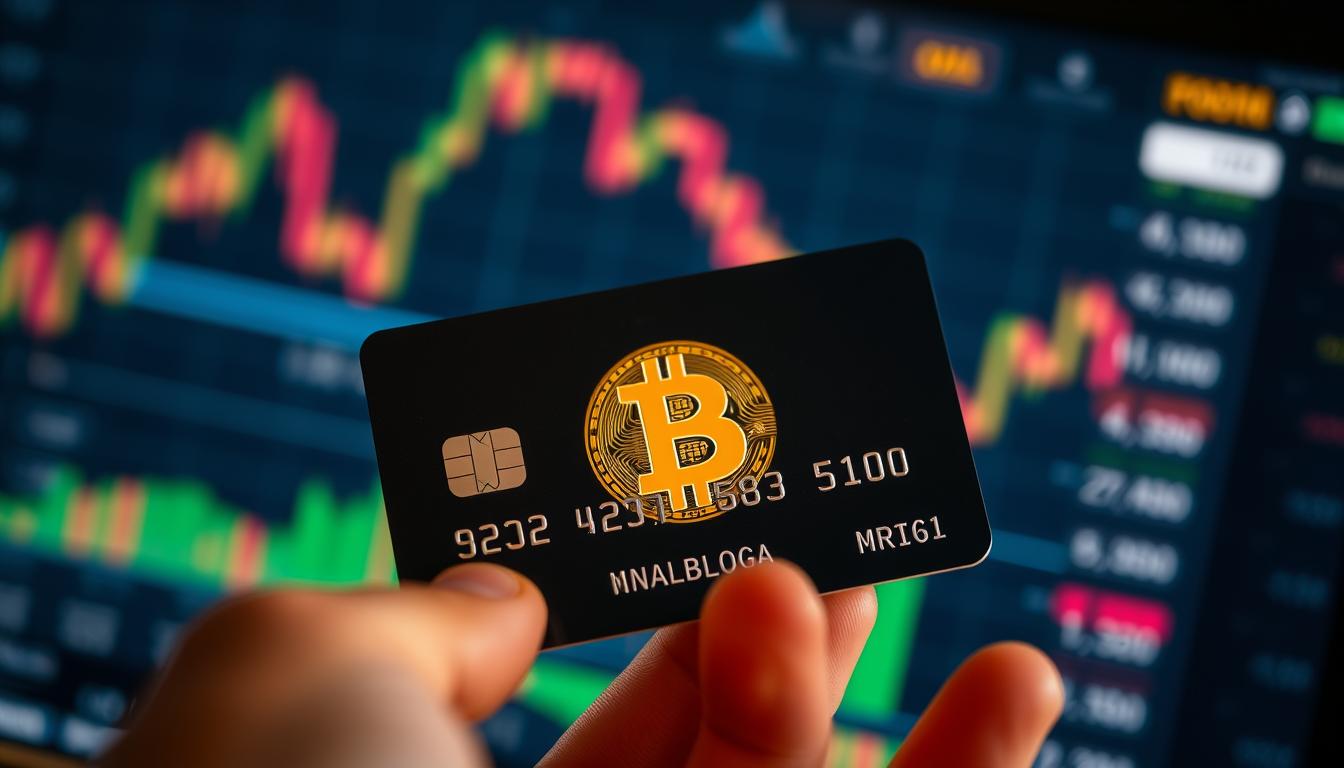
This guide gives a clear, step-by-step route for U.S. readers who want a fast on-ramp into crypto. You will learn safe payment paths, custody trade-offs, and ways to protect your wallet and identity.
We explain the difference between centralized platforms like Coinbase and Kraken and wallet-first services such as Best Wallet and Bitcoin.com. Centralized brokerages let you enter credit card details, then move assets to an external wallet. Wallet-first providers can connect a card and support many blockchains, though fees vary.
Expect trade-offs: card convenience brings higher costs, compliance checks, and possible cash advance fees that raise the total cost. The guide previews platform fees, issuer rules, and when debit or bank transfer is a cheaper choice.
Ready for a practical path? For deeper steps and a full walkthrough, see this concise on-ramp primer: buying with a card guide. The rest of the article balances speed, cost, and control so you pick the right platform and payment option for your first or next crypto purchase.
Safety-first basics before you buy bitcoin with a card
Start by choosing custody. An exchange wallet means the platform holds your private keys and stores your crypto on your behalf. External wallets place keys in your control so you can transfer crypto funds and keep self-custody.
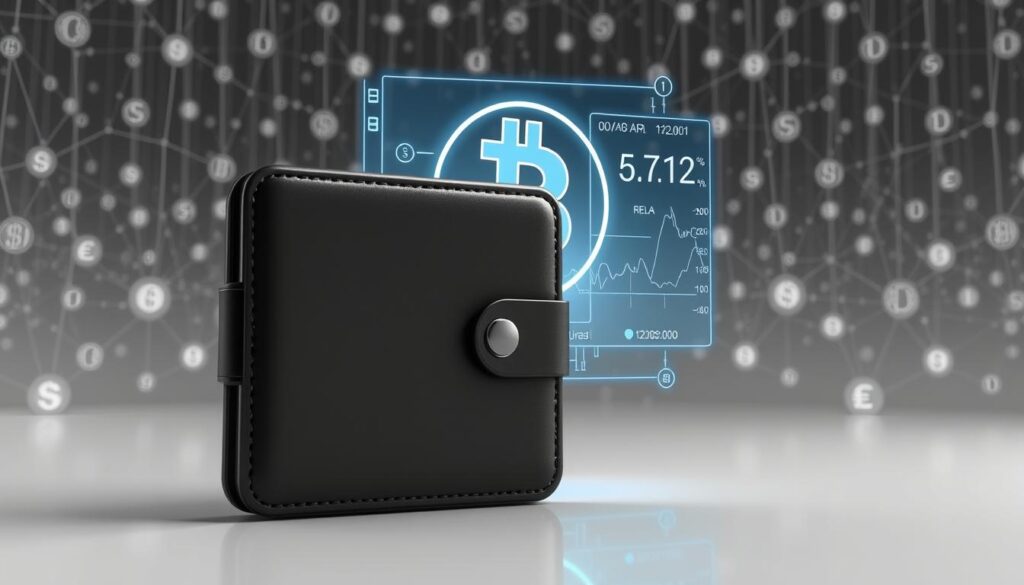
Understanding custody: exchange wallets vs. external crypto wallets
Exchange wallets are easy for first purchases and let customers use an internal balance quickly. They add platform risk and limit direct control.
External wallets and hardware devices reduce counterparty exposure. Always test with a small transfer first and confirm network details before moving larger amounts.
KYC, anonymity, and the account verification process
Most U.S. platforms and on-ramp partners require identity checks. This removes anonymity from the first transaction and links payment methods to your account. Even wallet apps that accept a credit option typically route through KYC providers.
| Choice | Speed | Privacy | Risk |
|---|---|---|---|
| Exchange wallet | Fast | Low (KYC required) | Platform custody |
| External wallet | Moderate (transfer time) | Higher if unlinked | User-controlled keys |
| On-ramp partners | Fast | Usually low (KYC) | Processor fees, verification holds |
Practical tips: enable strong authentication, store recovery phrases offline, and keep records of purchases for tax and disputes. Plan extra time for verification and fraud reviews before expecting settled funds.
Which credit cards work for buying crypto — and which don’t
Network rules and issuer policies together decide whether a card transaction for crypto will pass. Mastercard and Visa permit cryptocurrency purchases at the network level, but the issuing bank can still block the transaction.
American Express: many customers can complete a purchase with AmEx, yet expect higher costs. AmEx often charges elevated fees (around 4% or more) and acceptance may be limited at some processors.
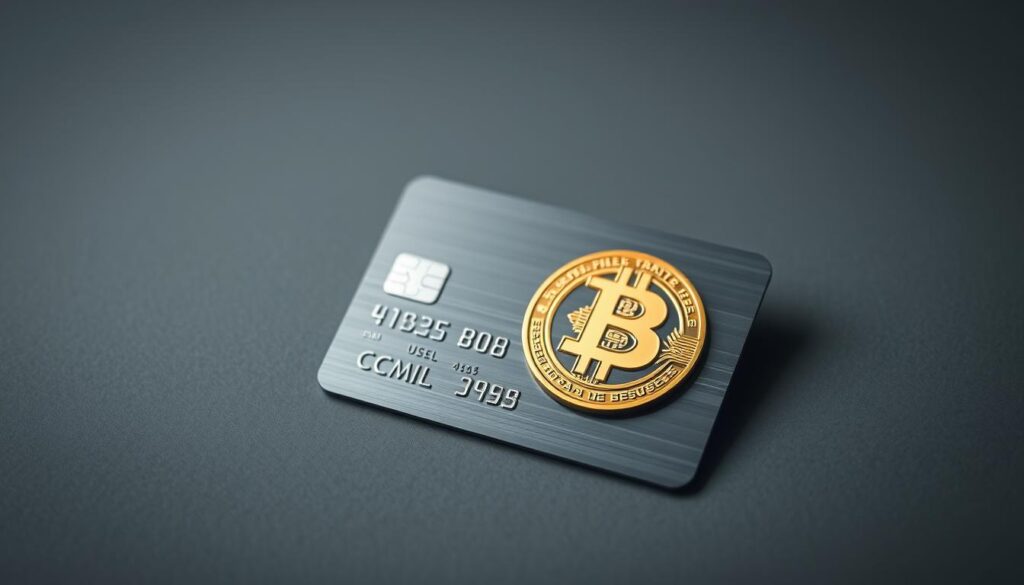
Issuers that commonly block card transactions
- Bank of America
- Barclays
- Capital One
- Chase
- Citibank
- Discover
- TD Bank
- Wells Fargo
Why approvals vary and cash advance risks
Issuers use merchant category codes, fraud rules, and risk models. When a transaction is routed as a cash advance, expect an immediate fee and interest from day one.
| Aspect | Typical impact | What customers should check |
|---|---|---|
| Network policy (Visa/Mastercard) | Usually permits crypto | Confirm network support |
| Issuer policy | May block or limit purchases | Call issuer before transacting |
| Cash advance coding | 3–5% fee, high APR | Ask about fees and rates |
| Rewards | Often excluded | Verify reward eligibility |
Practical tips: check your issuer’s policy before any buy crypto credit attempt. Avoid repeated failed tries that can trigger holds, and keep a debit or bank transfer option ready as a backup.
Where to buy: reputable platforms, apps, and wallets that accept cards
Select a trusted on-ramp: major exchanges and wallet apps offer clear paths for card-based crypto purchases. Pick a platform that matches your comfort with fees, limits, and custody.
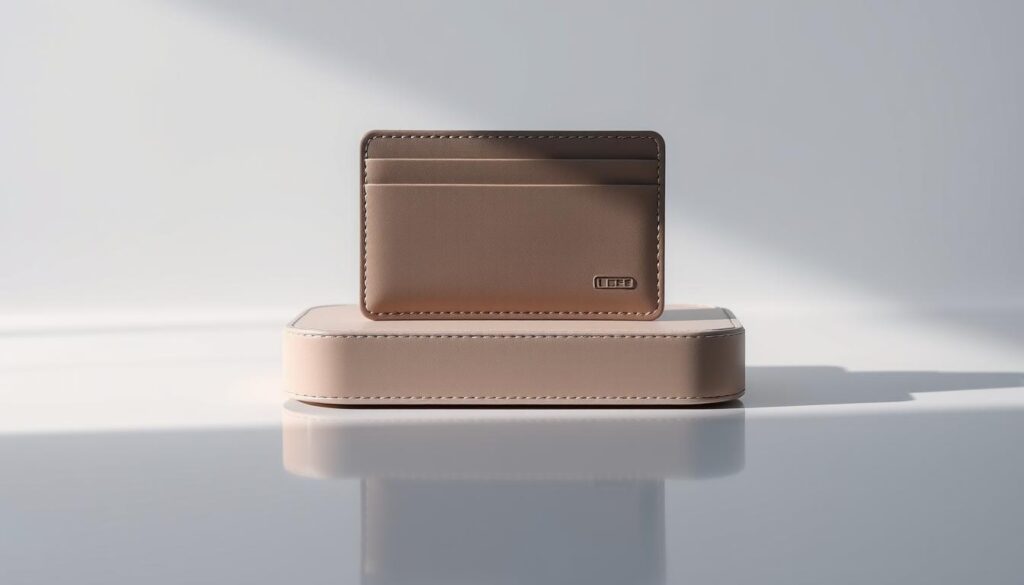
Centralized exchanges
Coinbase, Kraken, Binance, Crypto.com, and eToro all support card payments in many regions. These platforms provide a familiar account flow, security features, and quick access for new customers.
Decentralized routes
Front-ends like Uniswap often route purchases through on-ramp partners such as MoonPay. Expect KYC and processor checks before approval.
Wallet-first buying
Best Wallet lets users add a card as a payment method and buy tokens across 50+ chains. Fees are typically around 3% on a crypto purchase, and apps aim for a guided experience.
Bitcoin.com flow
Download the Bitcoin.com Wallet app, create an account, verify identity, pick a payment option, and track the order until assets land in your wallet. Purchases can start near $30 with fast settlement.
Transferring your assets
After settlement, consider moving crypto to a self-custody wallet you control. Back up seed phrases offline and confirm network details before you transfer crypto.
| Method | Speed | Notes |
|---|---|---|
| Centralized platform | Fast | Familiar UX, KYC, possible higher fees |
| On-ramp partner | Fast | Processor fees, identity checks |
| Wallet app | Fast–Moderate | Multi-chain support, card linking, in-app management |
How to buy bitcoin with credit card safely
Use a simple, staged process to verify platforms, link payment, and secure assets after settlement.
Choose a trusted U.S. platform and confirm compliance
Select a regulated platform or wallet with clear U.S. support. Compare fees, limits, and supported cards before you open an account.
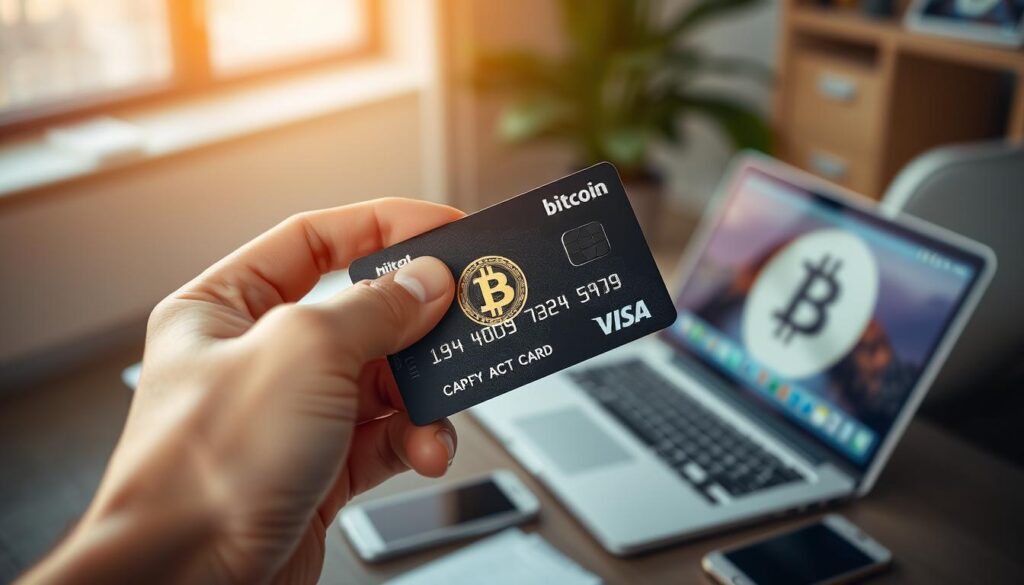
Follow a clear step-by-step purchase flow
- Check your issuer’s crypto policy and cash advance terms; keep a debit card as a fallback.
- Create the account, complete KYC, then enable PIN and biometrics for app access.
- Add your card under payment methods and set a personal spend limit or use a virtual number.
- Select bitcoin, review rates, fees, and the final amount before confirming the purchase.
- Place a small first order, then transfer crypto to a wallet you control after settlement.
Quick comparison
| Step example | Speed | Fee estimate |
|---|---|---|
| On-ramp app (Best Wallet) | Fast | ~3% |
| Exchange checkout | Fast | 2–4% |
| Bank transfer fallback | Moderate | Lower |
Final tip: keep records of each purchase, confirmation hashes, and final card charges for reconciliation and taxes. Small, staged purchases build a safer long-term experience.
Costs, risks, and smarter payment options
A quick purchase can hide layered fees and borrowing risks that affect your money and score.
Platform fees are often around 3% — Best Wallet charges about that on buys. Many issuers treat crypto transactions as cash advances, adding a 3–5% fee plus high APRs (commonly 17.99–29.99%).
Interest on a cash advance usually starts the day the transaction posts. That makes even a short holding period expensive if you carry a balance.
Credit impact and market risk
Large purchases can spike your credit utilization and hurt your credit score until balances are paid. At the same time, crypto volatility can erode value while interest compounds.
- Combine platform ~3% with a 3–5% cash advance to see the all-in percentage before confirming a transaction.
- Rewards are often excluded and some issuers cap cash advance limits, which can cause failed purchases.
- Use alerts, caps, and a pre-funded account to avoid overextension.
| Option | Typical fees | Primary risk |
|---|---|---|
| Credit purchase (card) | ~3% platform + 3–5% cash advance | High APR, utilization impact |
| Debit card | ~1–3% platform | Lower financing risk, instant funds |
| Bank transfer | Low fees | Slower settlement time |
Practical takeaway: prefer debit or bank transfer when possible. Run a small test purchase first, move assets to your wallet after settlement, and plan time for verification and limits when you set up an account.
Conclusion
,In short, a simple checklist keeps your transactions predictable and your assets protected.
Start with a trusted platform, confirm your issuer’s policy, complete identity checks, and run a small test purchase. Count platform fees and any cash advance charge before you confirm a payment.
Choose an app or exchange that lists fees clearly — Coinbase, Kraken, Binance, Crypto.com, eToro, Uniswap via MoonPay, Best Wallet, and Bitcoin.com are common options. After settlement, move funds into wallets you control and back up recovery phrases offline.
When card costs climb, pivot to a debit route or ACH transfer. Document each transaction, set limits, and treat tokens and cryptocurrencies as high-risk assets within a defined allocation. Expect payment rails to improve, but keep fee math and security first.
FAQ
What are the first safety steps before purchasing crypto with a card?
Start by choosing a regulated U.S. platform or wallet that enforces strong security. Enable two-factor authentication and biometric locks, verify the site’s HTTPS certificate, and review the platform’s custody policy so you know if funds stay on the exchange or belong to you in an external wallet.
How do exchange wallets differ from external crypto wallets?
Exchange or custodial wallets hold private keys for you; the platform controls access. External wallets, like hardware or noncustodial apps, let you hold your own keys for full control. Moving assets off an exchange reduces counterparty risk but adds responsibility for secure key storage.
Is anonymous buying possible in the United States?
No. Most U.S. platforms require KYC (identity verification) to comply with anti-money-laundering rules. “No KYC” services rarely apply to U.S. customers and carry higher fraud and regulatory risks.
Which major credit card networks work for crypto purchases?
Visa and Mastercard support crypto transactions on many platforms, but acceptance depends on the issuing bank’s policy. American Express is accepted in some places but often has higher fees and limited support.
Which banks often block crypto purchases on credit cards?
Several issuers, including Chase, Citi, Capital One, and Wells Fargo, have historically restricted or treated crypto purchases as cash advances. Always check your cardholder agreement or call your bank before placing an order.
Why are some crypto purchases treated as cash advances?
Issuers may categorize crypto transactions as cash-equivalents. When treated as a cash advance, fees and APRs apply immediately and there is no grace period, making the transaction more expensive than a standard purchase.
Which centralized platforms accept card payments for bitcoin and other cryptocurrencies?
Reputable U.S.-facing exchanges that commonly accept cards include Coinbase, Kraken, Crypto.com, and eToro. Binance offers card processing in many regions but check U.S. availability. Each platform lists supported payment methods in its help center.
Can I use decentralized services or wallets to buy tokens with a card?
Yes. Some wallets and decentralized apps integrate third-party fiat on-ramps like MoonPay, Wyre, or Banxa. These processors let you use a card to buy crypto that’s delivered to your wallet, but they still require identity verification.
What steps should I follow to complete a card-based crypto purchase securely?
Create an account on a trusted platform, finish KYC, enable security features, link your card as a payment method, set spending limits where possible, review rates and fees carefully, place the order, then transfer assets to a self-custody wallet if you prefer full control.
How do fees compare between card processors and bank cash advance charges?
Card processors and platforms often charge transaction fees around 2–4%. If your issuer treats the purchase as a cash advance, expect additional fees of 3–5% plus high APR that accrues from day one. Compare total cost before confirming a trade.
What financial risks should I consider when using credit for crypto purchases?
Using credit increases risk because of high APRs on cash advances, immediate interest, and potential damage to credit utilization ratios. Combined with market volatility, carrying a balance can magnify losses and hurt your score.
Are there lower-cost payment alternatives to card purchases?
Yes. Debit cards, ACH bank transfers, and wire transfers typically incur lower fees. ACH buys often cost less and avoid cash-advance rules, though they can take longer to settle than instant card purchases.
Should I move purchased crypto off an exchange?
If you want full control over your assets, transfer coins to a hardware wallet or a secure noncustodial app. Keep in mind that self-custody means you are solely responsible for key management and recovery phrases.
What is a practical checklist before submitting a card transaction for cryptocurrency?
Verify the platform’s U.S. compliance and reviews, confirm your issuer’s crypto policy, check fees and final fiat amount, enable strong security on your account, set spending limits, and plan where you will store the purchased assets afterward.
Which wallets support multi-chain card purchases and easy on-ramps?
Popular wallets with integrated fiat on-ramps include MetaMask (via third-party providers), Trust Wallet, and Exodus. Each partners with processors like MoonPay or Simplex to accept card payments and deliver multiple token types.
How long does a typical card-based crypto transaction take?
Card purchases are often near-instant for receipt of crypto, though some platforms delay final settlement for fraud checks. ACH or bank transfers take longer—usually 1–5 business days—but cost less.
What should I do if my card transaction is flagged or blocked?
Contact your card issuer to confirm their policy and request authorization if appropriate. If the issue persists, use an alternative payment method such as ACH, or try a different regulated platform that supports your card type.


